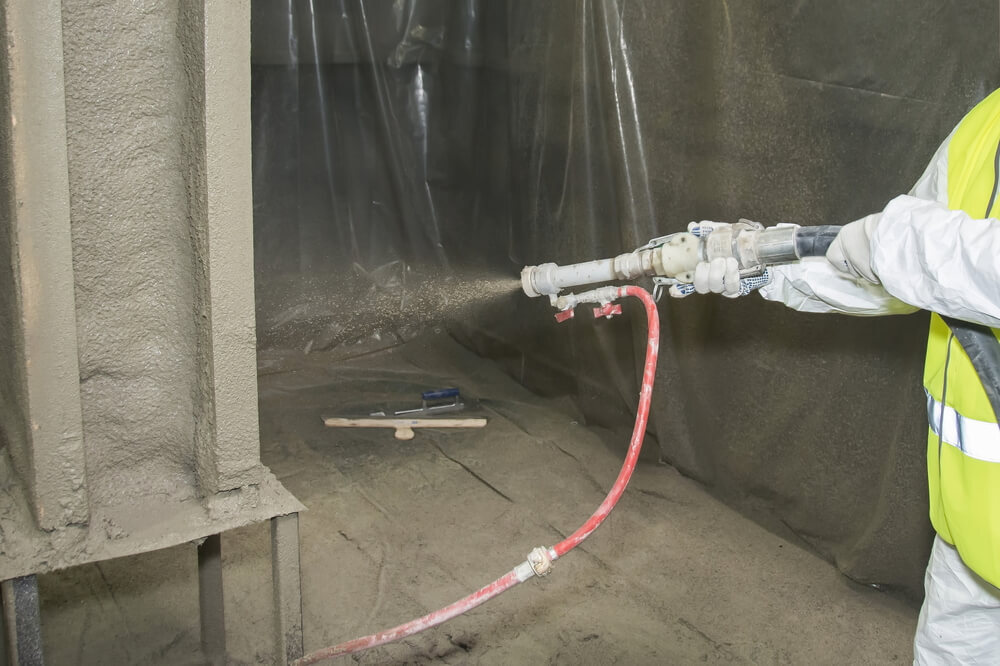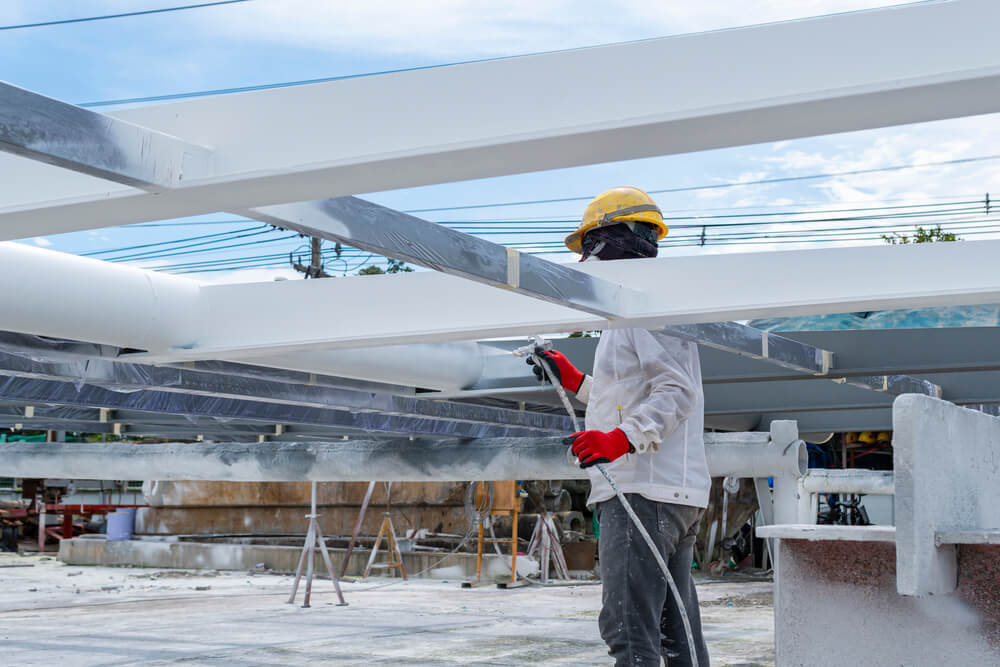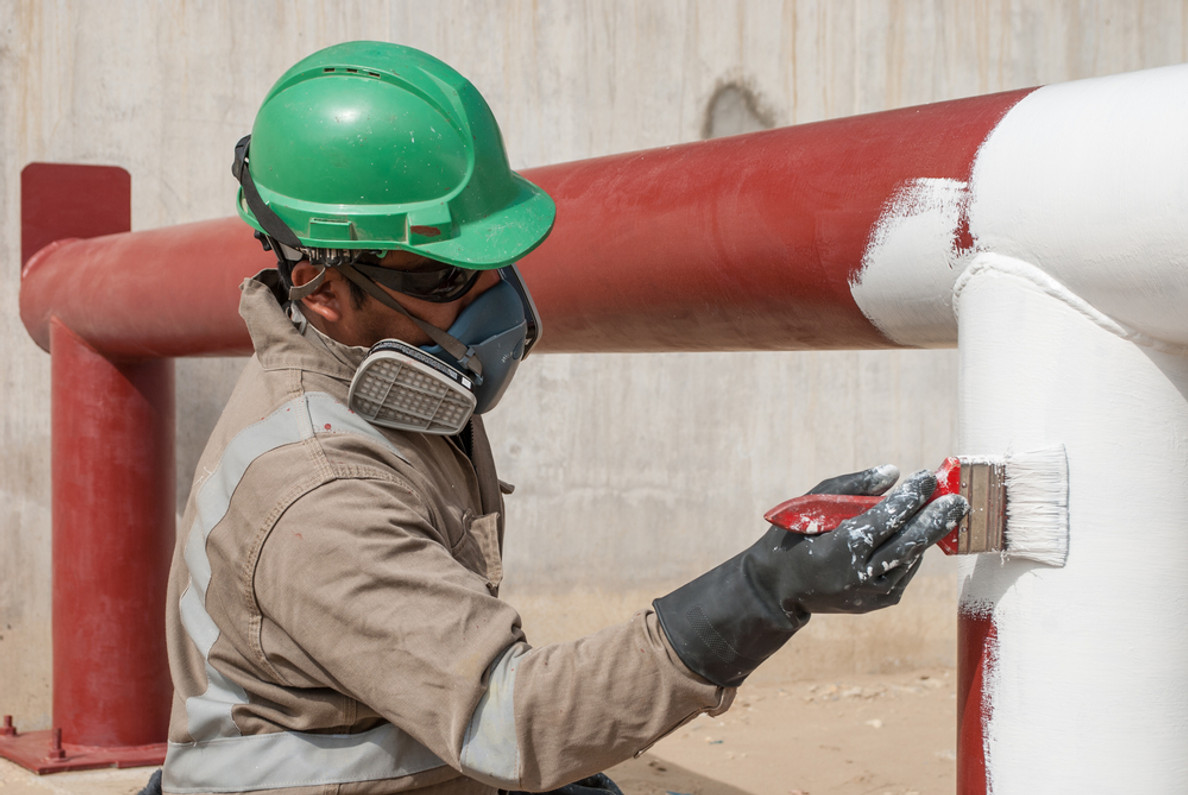Fireproof Coating for Steel: Fire Retardant vs. Intumescent Paint
When looking for a fireproof paint for steel, you'll come across terms like "fire retardant," "flame resistant," "intumescent," and more. What does it all mean? How can you find the right product for your application needs?
Don't worry! RDR Technologies is the industry leader in these products. Our experts are here to explain it all to you, and guide you in the right direction to find the perfect fire safety solution for you.
Is Steel Fire Resistant?
Steel itself is not flammable, meaning it does not catch fire or contribute to combustion. However, when exposed to extreme heat, it can weaken and lose its structural integrity. At around 1,100°F, steel can begin to lose about 50% of its strength, and at 1,800°F, it can fail entirely. This is why fireproof coatings, such as fire retardants and intumescent paints, are essential for fire protection.
Is Galvanized Steel Fire Resistant?
Galvanized steel, which is coated with a layer of zinc to prevent corrosion, does not inherently offer fire resistance. In high temperatures, the zinc layer can oxidize and deteriorate, exposing the steel underneath to weakening from heat. While it does not catch fire, it still requires additional fireproof coatings for optimal protection in fire-prone environments.
Is Stainless Steel Fire Resistant?
Stainless steel has a higher resistance to heat than regular steel due to its alloy composition, which includes chromium and nickel. It does not combust and retains its strength better at high temperatures. However, like other steel types, it can still weaken under prolonged exposure to extreme heat, making fire-resistant coatings necessary for structural applications.

What is Intumescent Paint?
When exposed to flame or heat above around 325°F, an intumescent paint swells up and forms a thick layer of char. The heat causes a chemical reaction that generates gas that fills tiny little pockets in the coating.
This new foam insulates and protects the substrate from the effects of the extreme heat. Your substrate could be steel, and is often the case, but doesn't have to be. It can also protect wood, drywall, and more.
A very thin coating that goes on at 40 millimeters thickness can expand to an inch thick or more, depending on the heat source. After the fire, you can scrape off that expanded foam, clean up the substrate, and re-apply the coating. If it sounds simple, it is!
Types of Fire Retardants for Steel
Fire retardants for steel work by either reducing the material's flammability or slowing down the spread of flames.
Fire Retardants for Exterior Steel
For steel structures exposed to outdoor conditions, fire retardants must withstand environmental factors such as moisture, UV rays, and temperature fluctuations. These specialized coatings provide durable, weather-resistant fire protection.
Fire Retardants for Interior Steel
Indoor fire retardants for steel are designed to provide protection in controlled environments. These coatings help meet fire safety regulations in buildings, warehouses, and industrial facilities.

Fire Resistant Paints for Steel that You Can Find in RDR Technologies
RDR Technologies offers a selection of non-intumescent paints and additives to enhance fire safety across various applications.
Contego HS for Steel
Contego High Solids Fire Retardant Paint is an advanced intumescent paint designed for steel structures. It provides up to three hours of fire protection, making it ideal for industrial and commercial applications. This paint expands when exposed to high temperatures, forming a thick insulating layer that shields the steel from heat damage.

FPCC for Plastic
FPCC Clear Retardant is a transparent fire retardant coating designed for plastic, polystyrene, and Styrofoam. While not specifically for steel, it plays a crucial role in fireproofing non-metallic materials that might be present in construction projects alongside steel structures.

DC315 for Spray Foam Insulation (SPF)
DC315 is a thermal barrier coating for spray foam insulation. This product is essential for buildings that use spray foam as insulation material, as it helps slow down fire spread and meets building code requirements.

What Are Non-Intumescent Paints?
Non-intumescents don't swell up, but work in a different way. They are a paint. Normally, these paints act like a protective barrier. When exposed to high heat, it undergoes a chemical transformation and creates something like a hard candy shell. It makes it more difficult for the flame to break through the paint layer and get to the substrate.
It also dissipates the heat throughout the layer of paint. This keeps the object from supporting flame, so the fire does not melt it. Manufacturers often sell these as paint additives.
Non-Intumescents Paints You Can Find in RDR Technologies
Non-intumescent fire-resistant coatings provide passive fire protection by forming a durable barrier that resists heat and flame spread. RDR Technologies offers a selection of non-intumescent paints and additives to enhance fire safety across various applications.
FS3 Paint Additive
FS3 Paint Additive is a versatile fire retardant that can be mixed with most paints to enhance fire resistance. This additive is ideal for DIY applications where standard paints need an extra layer of fire protection.

M111-PA Paint Additive
M111-PA Fire Retardant Additive is another excellent option for enhancing the fire resistance of regular paints. This additive helps create a protective barrier that slows flame spread, making it suitable for commercial and residential applications.

Finding the Right Fireproof Paint for Steel
Fireproof paint for steel looks like traditional paint, but it provides extra safety by:
-
Reducing flammability
-
Decreasing the fire's intensity
-
Slowing the spread of flames
-
Complying with fire building codes
Fire retardant paint slows flames from spreading and are meant for fires to self-extinguish. In contrast to this, intumescent paint reacts to high temperatures by swelling. It creates thick char barrier layers of foam to insulate the structure behind the paint from fire and smoke. Which is the perfect solution for your needs? That is a question we can figure out together.
Remember- if you need additional support finding the right fireproof paint for steel, we're always here for you!
Recent Posts
-
Halloween Decor Safety: Protecting Costumes, Props & Haunted Houses with Fire Retardants
Halloween is one of the most creative holidays of the year. From glowing jack-o’-lanterns to elabora …Nov 5th 2025 -
Cost-Benefits of Investing in Fire Retardant Coatings
In today’s construction and safety-conscious environment, protecting buildings, assets, and people h …Nov 5th 2025 -
Fire Resistant vs Fire Retardant vs Intumescent: What's The Difference
When it comes to fire safety, the terms fire-resistant, fire-retardant, and intumescent are often us …Nov 5th 2025




